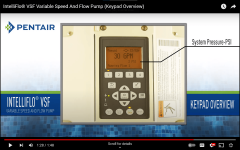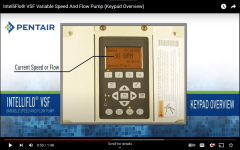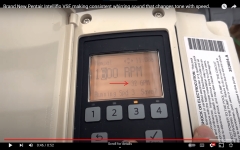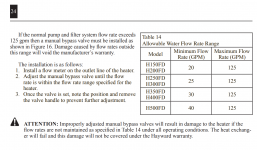- Sep 7, 2022
- 262
- Pool Size
- 16500
- Surface
- Plaster
- Chlorine
- Salt Water Generator
- SWG Type
- Hayward Aqua Rite (T-15)
My pool is about 16,000 gallons with an attached ~600 gallon spa that spills over to the pool. It’s probably two decades old and the plumbing is not ideal. There are no plans for the pool construction that I can find. I’ve redone the entire pool pad plumbing but haven’t touched the underground plumbing from the pool to the pad.
There is only one 2” suction line coming to the pad. I have one old style Pentair skimmer where the single main drain from the pool connects to the skimmer. There was no float valve and no weir gate in the skimmer when I bought this house two months ago (with zero previous pool experience) so after much research I bought a weir door and a float valve and installed it with a new o-ring and set the little rotating valve on the bottom for ~40% skimmer ~60% main drain (is there a more efficient ratio?).
My spa has two drains, one is in the center of the floor and the second is on the wall. So the two drains of the spa and the pool skimmer line all combine somewhere underground and become a single 2” pipe which goes to the pad.
For the returns, there is one return in the spa and 3 returns in the shallow side of the pool, all of which also combine into one 2” pipe somewhere underground.
Near the spa, there are two really old valves inside the ground with metal handles. They are not three-way valves. They are simple straight pipes with valves in the middle. Turning one of the valves closes the skimmer line so only the spa drains are operational. Turning the second valve closes the single spa return and the three pool returns and opens two other spa returns. These two other spa returns are two of the four jets in the spa that blow air when I turn on my spa blower. How can a simple, non three-way valve both close a line and also open another line at the same time?
I deduced that turning both of the valves in the ground is pretty much “spa mode” where only the spa drains and spa returns are operational. I guess this is for faster heating of the water in the spa. These old valves are very worn out and slightly leaky but they have four screws which can remove the valve but I am unable to find replacements for these old metal valve assemblies.
So I have one 2” suction line and one 2” return line at the pool pad, which is about 25-30ft away from the pool/spa.
I upgraded to a 60sqft FNS plus DE Filter and an Intelliflo VSF pump.
The maximum flow rate I see on my Blue-White flow meter is about 60-65gpm even with the pump on 3000rpm to max speed. It’s about 40-
43gpm at 2000rpm and 18-20gpm at 1000rpm.
Should I be seeing more flow or is this normal for my setup?
There is only one 2” suction line coming to the pad. I have one old style Pentair skimmer where the single main drain from the pool connects to the skimmer. There was no float valve and no weir gate in the skimmer when I bought this house two months ago (with zero previous pool experience) so after much research I bought a weir door and a float valve and installed it with a new o-ring and set the little rotating valve on the bottom for ~40% skimmer ~60% main drain (is there a more efficient ratio?).
My spa has two drains, one is in the center of the floor and the second is on the wall. So the two drains of the spa and the pool skimmer line all combine somewhere underground and become a single 2” pipe which goes to the pad.
For the returns, there is one return in the spa and 3 returns in the shallow side of the pool, all of which also combine into one 2” pipe somewhere underground.
Near the spa, there are two really old valves inside the ground with metal handles. They are not three-way valves. They are simple straight pipes with valves in the middle. Turning one of the valves closes the skimmer line so only the spa drains are operational. Turning the second valve closes the single spa return and the three pool returns and opens two other spa returns. These two other spa returns are two of the four jets in the spa that blow air when I turn on my spa blower. How can a simple, non three-way valve both close a line and also open another line at the same time?
I deduced that turning both of the valves in the ground is pretty much “spa mode” where only the spa drains and spa returns are operational. I guess this is for faster heating of the water in the spa. These old valves are very worn out and slightly leaky but they have four screws which can remove the valve but I am unable to find replacements for these old metal valve assemblies.
So I have one 2” suction line and one 2” return line at the pool pad, which is about 25-30ft away from the pool/spa.
I upgraded to a 60sqft FNS plus DE Filter and an Intelliflo VSF pump.
The maximum flow rate I see on my Blue-White flow meter is about 60-65gpm even with the pump on 3000rpm to max speed. It’s about 40-
43gpm at 2000rpm and 18-20gpm at 1000rpm.
Should I be seeing more flow or is this normal for my setup?





